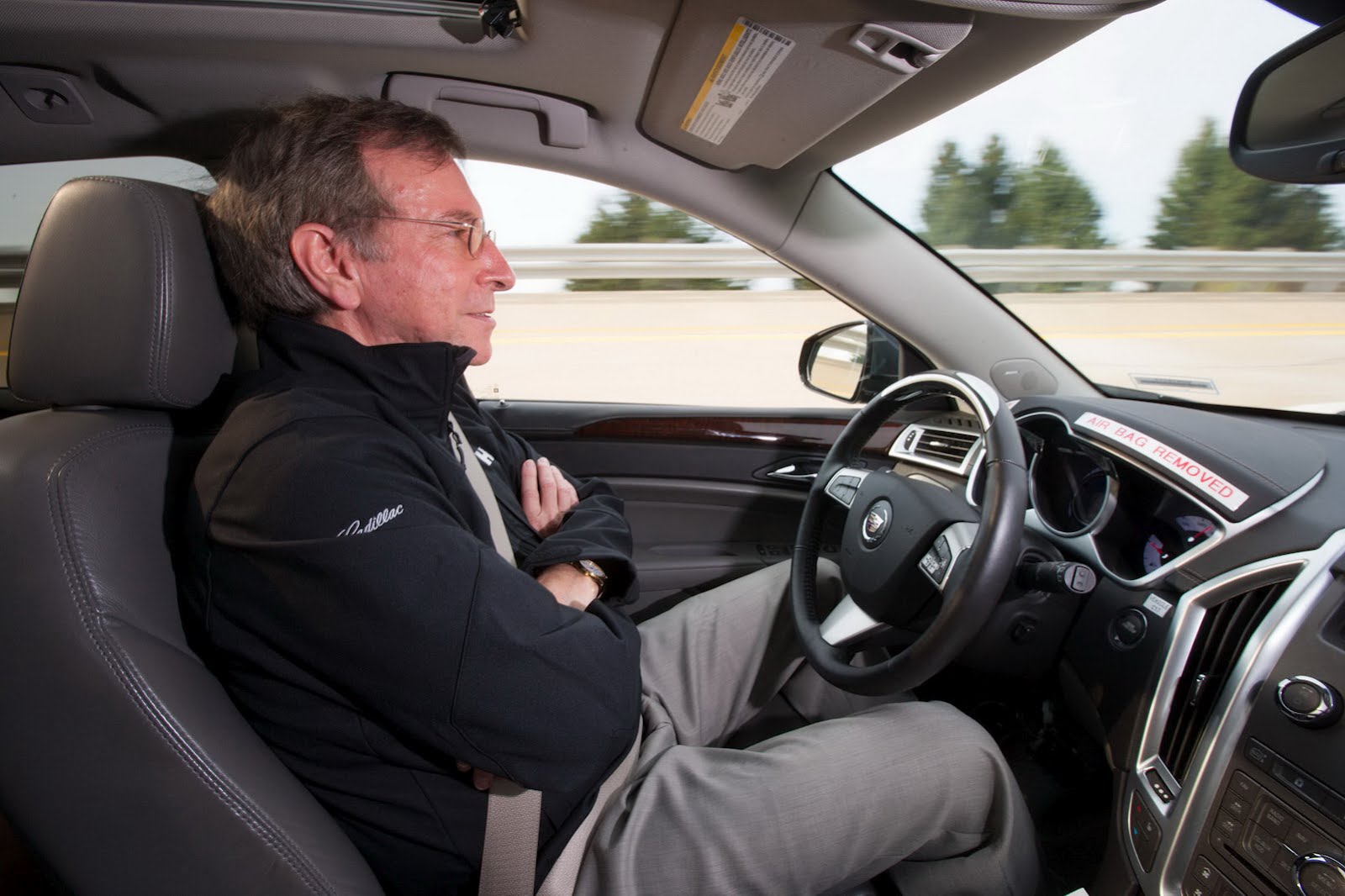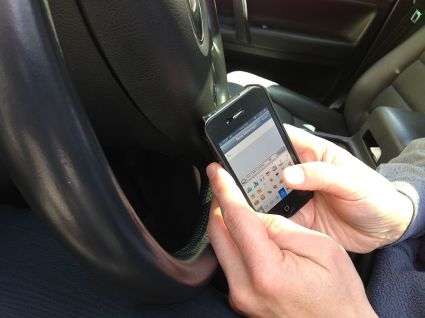
Robohub.org
Might the first, supervised robocars be… well… boring?

Photo: General Motors
Let me confess a secret fear. I suspect that the first “autopilot” functions on cars are going to be a bit boring.
I’m talking the offerings like traffic jam assist from Mercedes, super cruise from Cadillac and others. The faster highway assist versions that combine ADAS functions like lane-keeping and adaptive cruise control to keep the car in its lane and a fixed distance from the car in front of you. What Tesla has promoted and what scrappy startup “Cruise” plans to offer as a retrofit later this year. This is, in NHTSA’s flawed “levels” document what could be called supervision type 2.
Some of them also offer lane change, if you approve the safety of the change.
All these products will drive your car, slow or fast on highways, but they require your supervision. They may fail to find the lane in certain circumstances, because the makers are badly painted, or confusing, or just missing, or the light is wrong. When they do they’ll kick out and insist you drive. They’ll really insist, and you are expected to be behind the wheel, watching and grabbing it quickly — ideally even noticing the failure before the system does.
Some will kick out quite rarely. Others will do it several times during a typical commute. But the makers will insist you be vigilant, not just to cover their butts legally, but because in many situations you really do need to be vigilant.

Source: Wikimedia Commons
Testing shows that operators of these cars get pretty confident, especially if they are not kicking out very often. They do things they are told not to do. Pick up things to read. Do e-mails and texts. This is no surprise — people are texting even now when the car isn’t driving for them at all.
To reduce that, most companies are planning what they call “countermeasures” to make sure you are paying attention to the road. Some of them make you touch the wheel every 8 to 10 seconds. Some will have a camera watching your eyes that sounds an alarm if you look away from the road for too long. If you don’t keep alert, and ignore the alarms, the cars will either come to a stop in the middle of the freeway, or perhaps even just steer wild and run off the road. Some vendors are talking about how to get the car to pull off safely to the side of the road.
There is debate about whether all this will work, whether the countermeasures or other techniques will assure safety. But let’s leave that aside for a moment, and assume it works, and people stay safe.
I’m now asking the harder question, is this a worthwhile product? I’ve touted it as a milestone — a first product put out to customers. That Mercedes offered traffic jam assist in the 2014 S-Class and others followed with that and freeway autopilots is something I tell people in my talks to make it clear this is not just science fiction ideas and cute prototypes. Real, commercial development is underway.
That’s all true, and I would like these products. What I fear though, is whether it will be that much more useful or as relaxing as adaptive cruise control (ACC.) You probably don’t have ACC in your car. Uptake on it is quite low — as an individual add-on, usually costing $1,000 to $2,000, only 1-2% of car buyers get it. It’s much more commonly purchased as part of a “technology package” for more money, and it’s not sure what the driving force behind the purchase is.
Highway and traffic jam autopilot is just a “pleasant” feature, as is ACC. It makes driving a bit more relaxing, once you trust it. But it doesn’t change the world, not at all.
I admit to not having this in my car yet. I’ve sat in the driver’s seat of Google’s car some number of times, but there I’ve been on duty to watch it carefully. I got special driver training to assure I had the skills to deal with problem situations. It’s very interesting, but not relaxing. Some folks who have commuted long term in such cars have reported it to
be relaxing.
A step to greater things?
If highway autopilot is just a luxury feature, and doesn’t change the world, is it a stepping stone to something that does? From a standpoint of marketing, and customer and public reaction, it is. From a technical standpoint, I am not so sure.
Highway cruise products are being created out of existing ADAS tools — like ACC, FCA (Forward Collision Avoidance) and Lane-keeping. Those tools are great, but they are almost entirely created from radars and camera systems (most commonly the MobilEye.)
You learn something from driving with those, and you push progress in machine vision, computer vision and radar, but I suspect that the real robocars will not be based on ADAS technologies, or even evolutions of ADAS technologies— not at first.
I am highly confident that standby and unsupervised cars will work with LIDAR as their primary sensor for localization and perception of other vehicles on the road. That’s because LIDAR is quickly becoming cheap, and cameras are not yet able to delivery the reliability levels desired. Nobody, no matter how much they love vision-based systems, is going to leave out LIDAR on the first vehicles just to save $500. The first car is the car of greatest risk, and you will do all you can reasonably do to make it as safe as you can.
This is the error of the NHTSA and SAE “levels.” These levels have a focus on the amount of human supervision a car needs to be safe. Level 2 is “Fully supervised.” Level 3 is “Standby” — a human is not supervising ordinarily but must be standing by to take control on modest (non-super-urgent) notice. Levels 4 and 5 are “unsupervised.”
NHTSA’s 3 categories of supervision do have one valid ordering, in that doing 4 is harder than 3, and 3 is harder than 2. This is misleading, though, as they are not an evolution plan. Standby doesn’t necessarily derive from the technologies used in fully supervised. Unsupervised will use some of the technologies of standby, but it also will invent some entirely different paths to the solution. SAE has even explicitly declared the numbers are not an evolution plan in their latest revision of their document.
Google has issued doubts about the Standby category. They built it and tested it with commuting employees, though told them to supervise just in case. They found the employees after a week or two of use quickly did things to make the team uncomfortable. The transition from standby mode to manual driving is a complex and risky one — one that Google decided to simply eliminate in its next generation of prototypes.
The first commercial robocar was the Navia, which is in the Unsupervised category over private roads on a campus. It has no wheel, it was never sold to operate in supervised or standby modes. In spite of the ordering of the levels, it was the “level” 4 that came first, ahead of 2 and 3. (Level 1 is just regular ADAS and has been here for years.)
The Supervised category of products being released now still have their value, beyond the luxury they may offer their users. Driving huge numbers of road miles teaches us much, particularly learning about all the times the systems fail. While you won’t build a standby or unsupervised system out of ADAS tools, the ADAS tools actually offer a great fallback approach if the superior systems fail. While it might be too risky to drive 100 miles on an ADAS derived system without supervision, driving 0.1 miles to pull off a road after failure of another system may be a reasonable safety decision.
By coming out first, these systems will actually get the most “practice,” which is to say the most experience. The more failures, the more work that can be done to fix them, and the better ability to know what you can handle safely and what you can’t.
Radar is also likely to be a tool of all systems — it’s just too useful, too superhuman in its abilities to not make use of it. The supervised systems are teaching us more lessons about how to use and not use radar. Particularly worthwhile are newer efforts to make radar work on stopped objects. Radar sees through the most dense fog, which nothing else does.
A version of this article originally appeared on Robocars.com.
tags: autonomous driving, c-Automotive, robocars, robohub focus on autonomous driving




